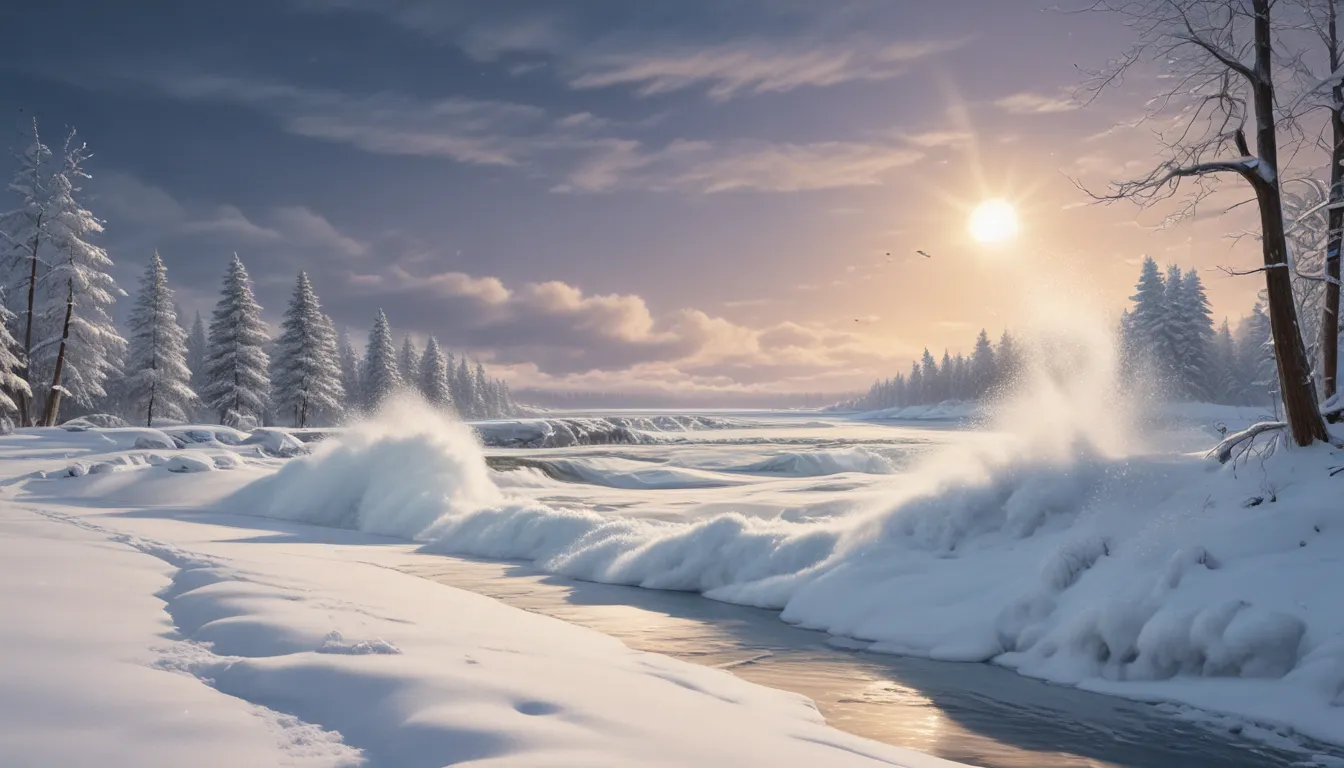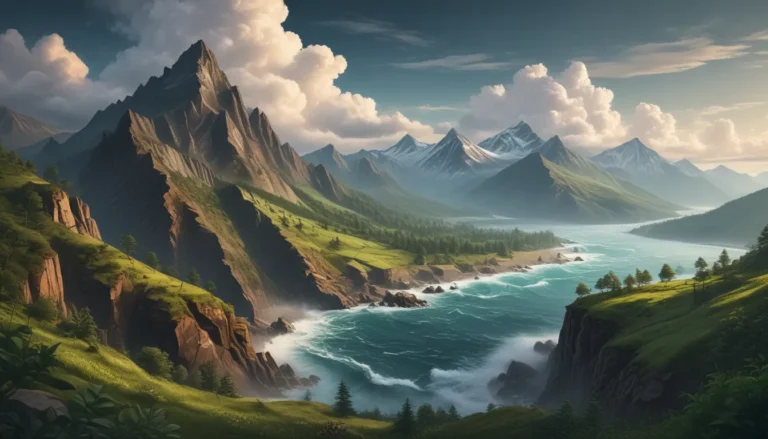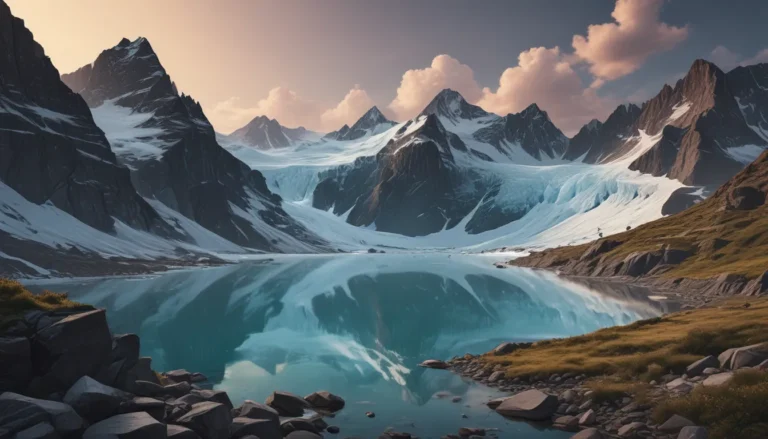A Note About Images: The images used in our articles are for illustration purposes only and may not exactly match the content. They are meant to engage readers, but the text should be relied upon for accurate information.
If you’re a snow lover or simply intrigued by the wonders of nature, lake-effect snow is a phenomenon that will captivate your imagination. This mesmerizing weather event brings heavy snowfall to regions downwind of large bodies of water, creating a winter wonderland that enchants snow enthusiasts and winter sports enthusiasts alike. In this article, we will explore 12 extraordinary facts about lake-effect snow, shedding light on its formation, characteristics, and impacts on the environment and local communities.
The Enchanting Snowfall of Lake-Effect Snow
Lake-effect snow is a snow lover’s dream come true. Regions located downwind of the great lakes are often blessed with copious amounts of snowfall, transforming the landscape into a snowy paradise. This unique type of snowfall is not only intense but also localized, resulting in heavy snowfalls in particular areas. The great lakes – Superior, Michigan, Huron, Erie, and Ontario – play a crucial role in the formation of lake-effect snow, contributing to the generation of this mesmerizing weather phenomenon.
Snow Belts and Squalls: The Unique Characteristics of Lake-Effect Snow
Areas that experience frequent and heavy lake-effect snowfall are known as “snow belts”. These regions can receive several feet of snow in a short period, creating a winter wonderland for snow enthusiasts. Lake-effect snowfall often occurs in the form of intense snow squalls, narrow bands of heavy snow showers that move quickly and can bring sudden, heavy bursts of snow, significantly reducing visibility.
Microclimates and Snowfall Rates: The Impacts of Lake-Effect Snow
Lake-effect snow creates microclimates, resulting in stark variations in snow accumulation over short distances. Areas just a few miles apart can experience drastically different snowfall amounts due to the influence of the lakes. During lake-effect snow events, snowfall rates can be astonishingly high, with rates of 2-3 inches per hour or more not uncommon. This rapid accumulation poses challenges for travel and transportation in affected regions.
Extending Boundaries and Mesmerizing Snow Bands
Lake-effect snow can extend hundreds of miles inland, defying geographical boundaries created by the lakes. Areas as far as 100 miles away from the lakeshore can still experience significant snowfall from these weather systems. Known as the “lake-effect snow machine,” this weather phenomenon can persist for days or even weeks, keeping the snowfall relentless and piling up impressive snow depths throughout the winter season. During lake-effect snow events, mesmerizing snow bands form, stretching across the sky like ethereal ribbons, creating a captivating spectacle against the backdrop of frozen lakes.
Shadows and Snowfall Variability: Intriguing Aspects of Lake-Effect Snow
The presence of lake-effect snow can create intriguing shadows on the downwind side of the lakes. These shadows occur due to the blocking effect of the snow bands, shielding certain areas from significant snowfall. Lake-effect snow is notorious for its high spatial variability in snowfall amounts, influenced by factors such as wind direction, lake temperature, and atmospheric stability. This variability makes it a fascinating subject of study for meteorologists and weather enthusiasts alike.
Tourism, Recreation, and Impact on Local Economies
Lake-effect snow has a significant impact on local economies, attracting winter enthusiasts and tourists who revel in snow-related activities. Ski resorts, snowmobiling trails, and other winter sports thrive in these snow-blessed regions. While lake-effect snow can bring positive economic benefits through tourism, it can also disrupt transportation, affect businesses, and increase costs for snow removal. It is essential for communities in affected regions to prepare for the impacts of lake-effect snow and take necessary precautions to ensure safety and stability.
Understanding Lake-Effect Snow: A Phenomenon Worth Exploring
In conclusion, lake-effect snow is a fascinating weather phenomenon that occurs in regions near large bodies of water, creating extraordinary snowfall and unique winter landscapes. The complex interaction of cold air masses, prevailing winds, and the warmer waters of the lakes leads to the development of powerful snowstorms that captivate and amaze. By understanding the incredible facts about lake-effect snow, we deepen our knowledge of weather patterns and appreciate the unpredictability and diversity of nature’s forces. Whether you live in an area prone to lake-effect snow or simply have an interest in meteorology, exploring the power and beauty of this phenomenon enhances our understanding of the world around us.
FAQs: Your Guide to Lake-Effect Snow
- What causes lake-effect snow?
-
Lake-effect snow occurs when cold air passes over a warmer body of water, such as a lake, causing the moisture to evaporate and rise into the colder atmosphere, where it condenses and forms snow clouds.
-
Which regions are most affected by lake-effect snow?
-
Regions downwind of the Great Lakes, such as the snowbelts of the United States and Canada, experience the most significant impact from lake-effect snow.
-
How much snowfall can lake-effect snow produce?
-
Lake-effect snowfall can range from a few inches to several feet in a single day, resulting in rapid accumulation and challenging conditions for transportation.
-
Is lake-effect snow predictable?
-
While meteorologists can forecast the potential for lake-effect snow, predicting the exact timing and location of intense snowbands is challenging due to the complex interaction of various atmospheric factors.
-
Does lake-effect snow only occur in winter?
-
Lake-effect snow predominantly occurs during the winter season, but it can also occur in late autumn and early spring when the temperature gradient between the lakes and cold air is significant.
-
Can lake-effect snow impact local economies?
-
Yes, lake-effect snow can have both positive and negative effects on local economies. It can bring tourism and support winter sports but can also disrupt transportation and increase costs for snow removal.
-
Are there any safety precautions to take during lake-effect snow events?
-
During lake-effect snowstorms, it is essential to stay updated on weather forecasts, avoid unnecessary travel, and take precautions for safe driving and outdoor activities. Be aware of potential power outages due to heavy snowfall and strong winds.
-
Can lake-effect snow impact everyday life?
-
Absolutely! Lake-effect snow can significantly impact daily lives in affected regions, leading to school closures, delays, or cancellations of events, and changes in outdoor recreational activities due to hazardous conditions.
-
Is lake-effect snow a rare occurrence?
-
Lake-effect snow is not rare in regions where it occurs, but the intensity and duration of snow events can vary from year to year.
-
Can lake-effect snow be a visually stunning natural phenomenon?
- Yes, lake-effect snow can create breathtaking winter landscapes with fluffy white snow, frost-covered trees, and frozen lake shores, offering opportunities for photographers and nature enthusiasts to capture stunning images of this unique weather event.
Exploring the Beauty of Lake-Effect Snow
Lake-effect snow is a magical winter phenomenon that continues to captivate and mesmerize those who experience it. From its stunning snowfall rates to its ability to create microclimates and snow belts, lake-effect snow showcases the power and beauty of nature. So, the next time you find yourself in a snowy region influenced by the great lakes, take a moment to marvel at the magic of lake-effect snow and appreciate the wonders of our natural world.






